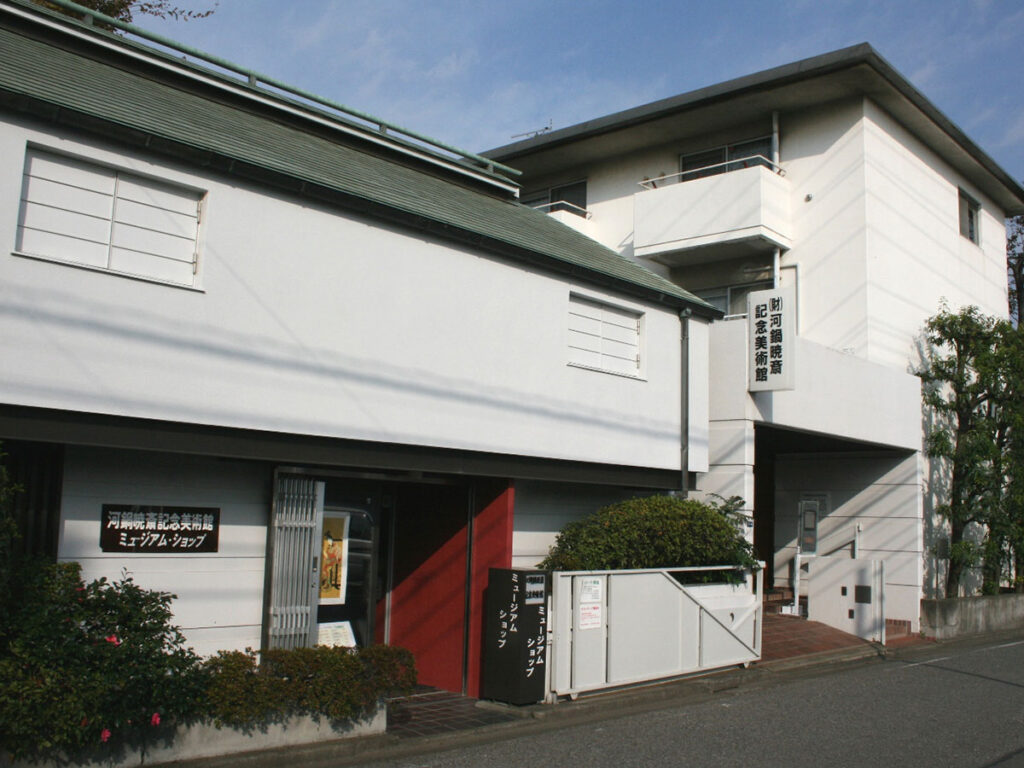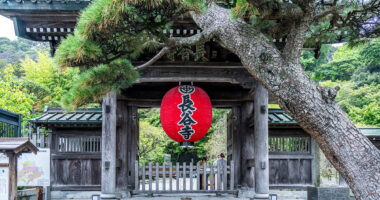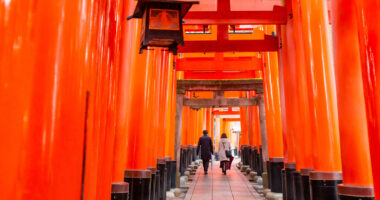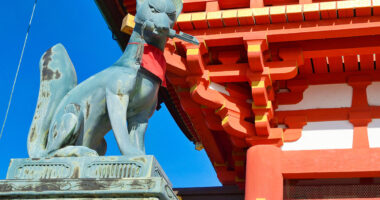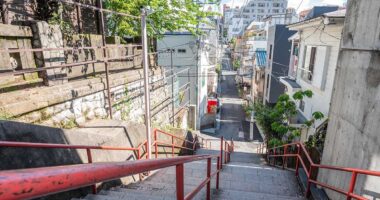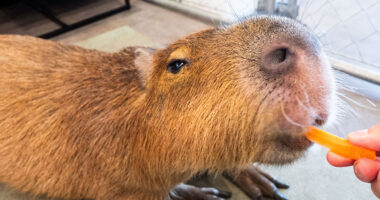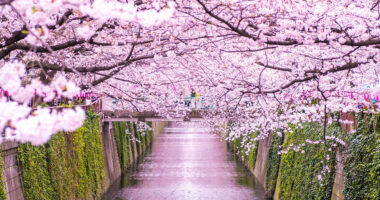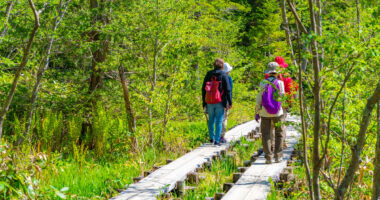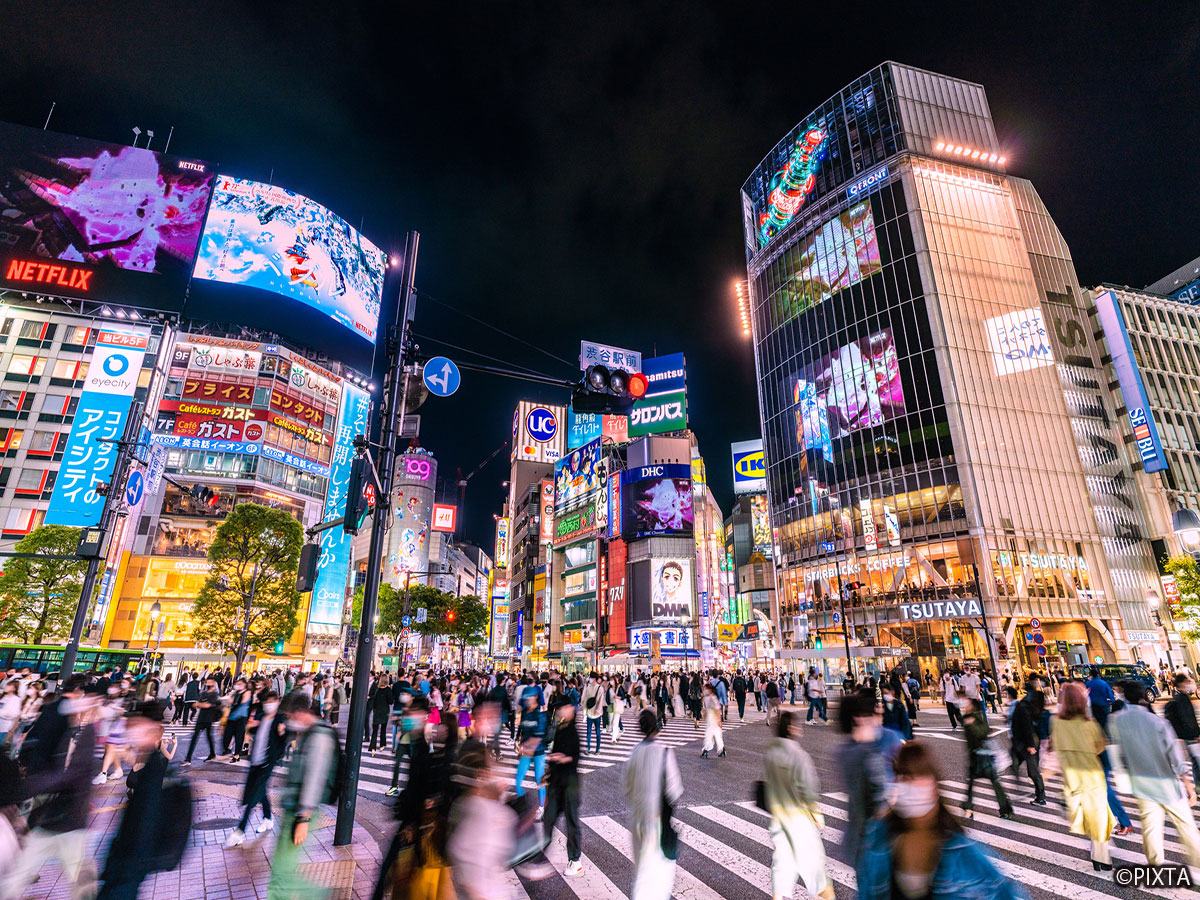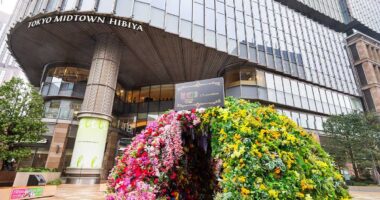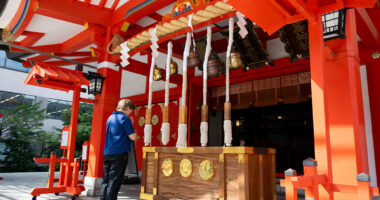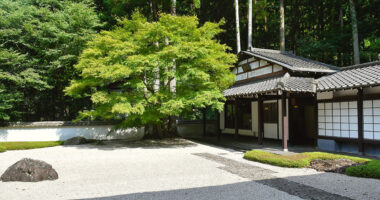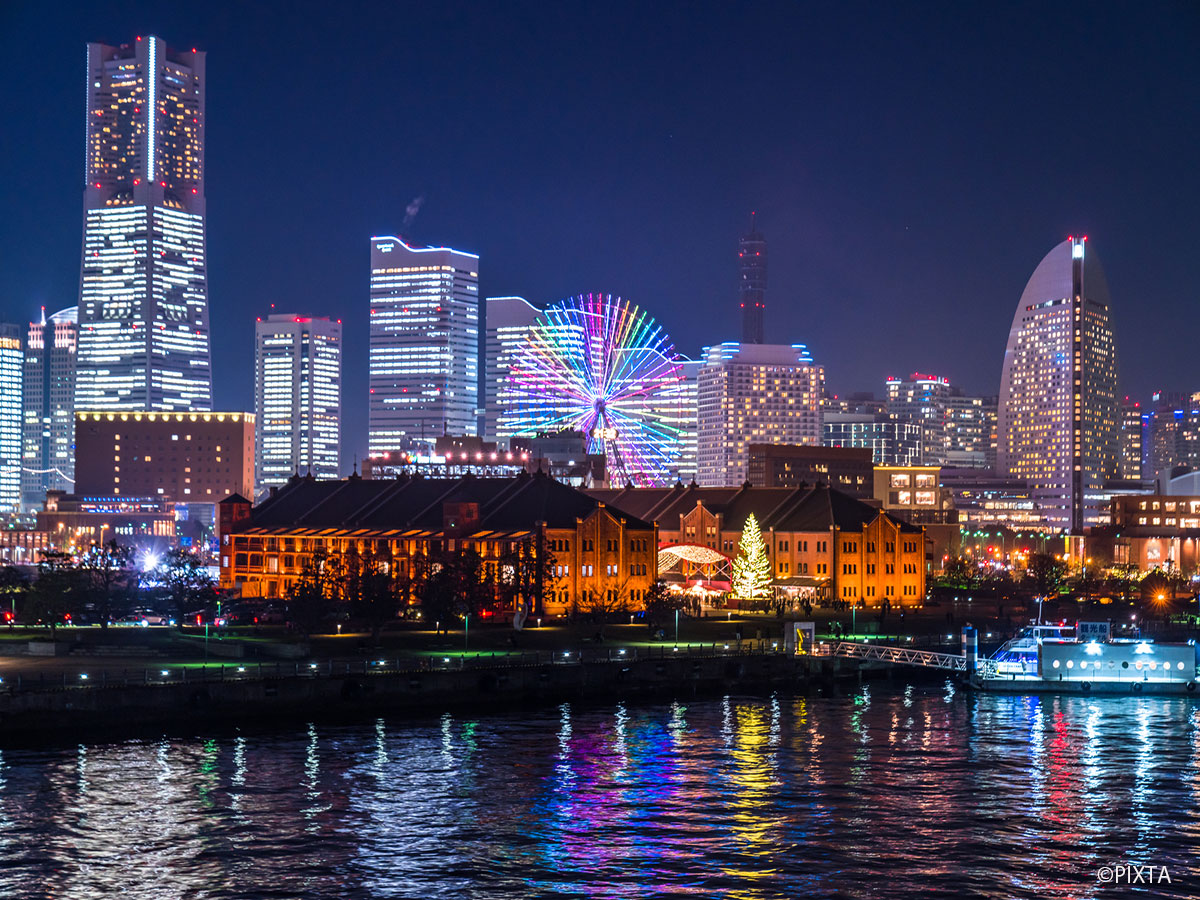Kyōsai Kawanabe (1831–1889) was an artist who flourished from the late Edo period into the Meiji era. Incorporating both ukiyo-e artwork (traditional Japanese woodblock paintings and prints) and Western painting styles, he was celebrated as a genius with “nothing he could not draw.”
Thanks to the influence of cultural figures who knew Kyōsai personally, his broad range of styles and techniques continued to be highly regarded in Europe and the United States. In postwar Japan, however, his name nearly vanished from the pages of art history.
The Kawanabe Kyōsai Memorial Museum was founded by his great-granddaughter to preserve and exhibit his works—many of which were in danger of being lost—and to share their value with a wider audience.
A hidden suburban gem that draws in fans
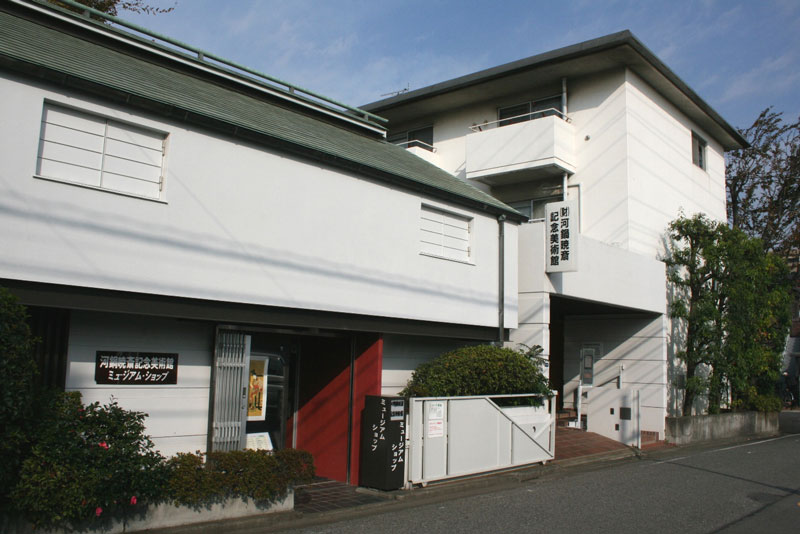
Exterior of the Kawanabe Kyōsai Memorial Museum
The Kawanabe Kyōsai Memorial Museum is located in a peaceful residential neighborhood in Warabi City, Saitama Prefecture.
Though not the most convenient location, it is the only museum in the world with a permanent collection of Kyōsai’s works—drawing passionate fans not only from across Japan but from overseas as well.
The museum displays around 40 pieces at a time. In its compact space, visitors can enjoy a rotating selection of Kyōsai’s diverse works—ranging from yōkai (Japanese folklore ghosts and demons) paintings and caricatures to pieces that carry on the traditions of the Kanō school—curated around changing themes.
Many visitors stay for an extended time, carefully studying each piece, a testament to the deep fascination with Kyōsai’s art.
Kyōsai’s diverse works: a unique presence in Japanese art history

Interior of the first exhibition room at the Kawanabe Kyōsai Memorial Museum
After first apprenticing under the ukiyo-e master Utagawa Kuniyoshi, Kyōsai went on to train in the Kanō school, inheriting the traditions of classical Japanese painting.
The Kanō school, one of Japan’s most prominent painting styles, originated in the mid-Muromachi period. Kyōsai had mastered its techniques by the age of 19, demonstrating exceptional talent from a young age.
He later studied a wide range of styles—including the Tosa school, the Maruyama-Shijō school, the Rimpa school, and Western painting—broadening his artistic expression.
From religious paintings to genre scenes, satirical works, depictions of yokai, and comic illustrations, his subjects were remarkably diverse, all marked by exceptional skill and a vivid imagination.
Here, we take a closer look at several ukiyo-e woodblock prints from the museum’s collection that showcase Kyōsai’s genius.

“Cattle Sheds at Takanawa from ‘Scenes of Famous Places along the Tōkaidō Road’ ”
Our first example is from an 1863 series depicting the journey of Tokugawa Iemochi, the 14th shogun, as he traveled to Kyoto under the Tokugawa regime.
In the foreground, children peek over a wall to watch the procession. One rides on the back of an ox, gazing with wide-eyed curiosity—a lighthearted contrast to the dignified, orderly shogunal retinue passing by.
Beneath the seemingly peaceful scene lies Kyōsai’s hallmark mix of social satire and humor, capturing both the spirit of the era and the perspective of the common people.
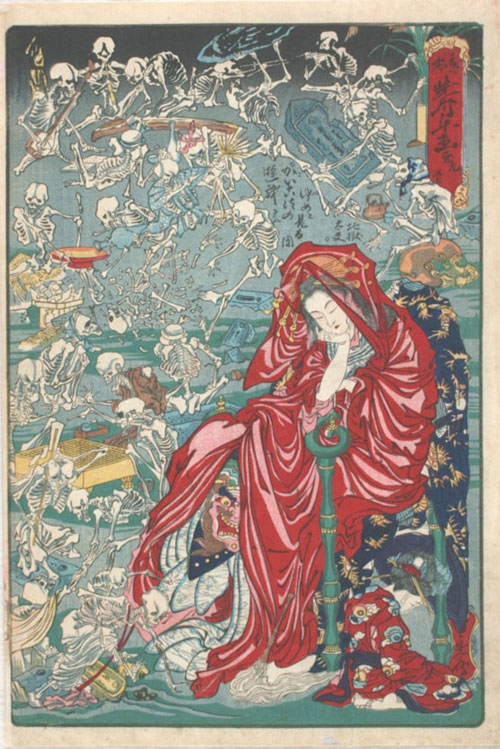
“Hell Courtesan Dreams of Skeletons at Play, No. 9 from ‘Drawings for Pleasure of Kyōsai'”
The legendary courtesan Jigoku Dayū, who is said to have lived in the Muromachi period, was renowned for her deep knowledge of Buddhist philosophy—her name (“Hell Courtesan”) reflecting both her allure and her profound spirituality.
She has long been a popular subject for artists, symbolizing the coexistence of opposing values: splendor and resignation, pleasure and impermanence.
In Kyōsai’s “Hell Courtesan Dreams of Skeletons at Play, No. 9 from ‘Drawings for Pleasure of Kyōsai’,” the courtesan dreams of skeletons merrily enjoying themselves. The work masterfully blends themes of life and death, beauty and grotesque, elevating them into a playful yet thought-provoking composition. The boldness and delicacy of the piece reflect Kyōsai’s unique aesthetic sensibility.
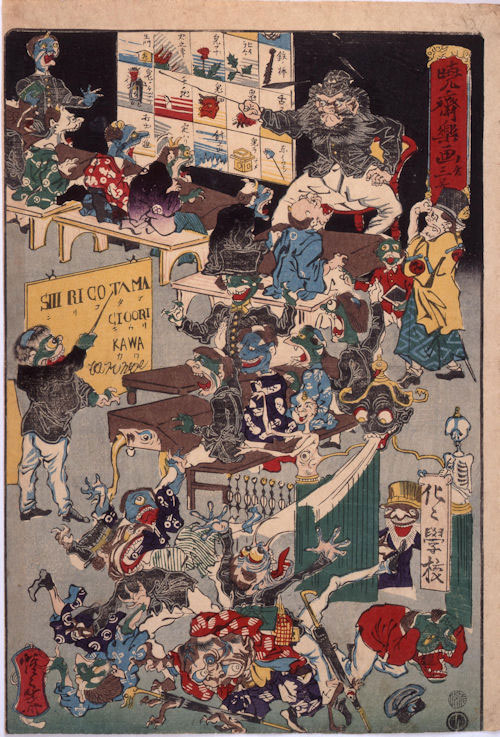
“School for Spooks, No. 3 from ‘Drawings for Pleasure of Kyōsai’”
“School for Spooks, No. 3 from ‘Drawings for Pleasure of Kyōsai’” is a quintessential example of Kyōsai’s satirical wit.
Here, young kappa (mischievous river-dwelling, turtle-like yokai) and oni (usually horned, ogre-like demons) children sit at desks, attending class in earnest. The oni children are taught essential vocabulary through illustrations, while the kappa children learn the latest methods—Roman letters—filling the scene with playful details.
Even mischievous yokai children being turned away at the gate are included, giving the work the feel of a satire on real-world society.
In the turbulent years following the Meiji Restoration, Japan’s education system underwent dramatic change. This work can be seen as Kyōsai’s humorous yet incisive commentary on the confusion that followed the 1872 introduction of the new school system.
Kyōsai, admired internationally for his skillful depictions and keen powers of observation, combines exquisite technique with a humorous perspective on society and the establishment. His works capture the imagination across eras and borders.
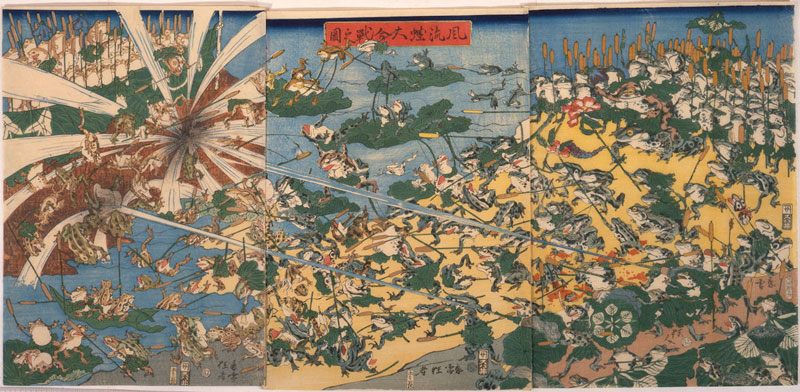
“Elegant Picture of the Great Frog Battle”
At first glance, “Elegant Picture of the Great Frog Battle” appears to be a simple scene of frogs waging war. But knowing it is a Kyōsai satire adds a whole new layer of meaning.
Kyōsai often painted frogs, and here he depicts anthropomorphic frogs locked in fierce combat, rendered with both precision and a dynamic sense of movement.
Look closely, and you’ll spot the crests of the Kishū Tokugawa clan and the Mōri clan on banners and cannon wheels—clues that this work is a satire of the First Chōshū Expedition of 1864, a military campaign during the late Edo period where the Tokugawa shogunate sought to suppress the rebellious Choshu domain.
Kyōsai’s ability to turn power struggles into humor and irony—embedding sharp social critique within scenes of apparent whimsy—is on full display here. Using his favorite motifs to comment on the times was one of his greatest strengths.
Kyōsai’s art captivates fans worldwide
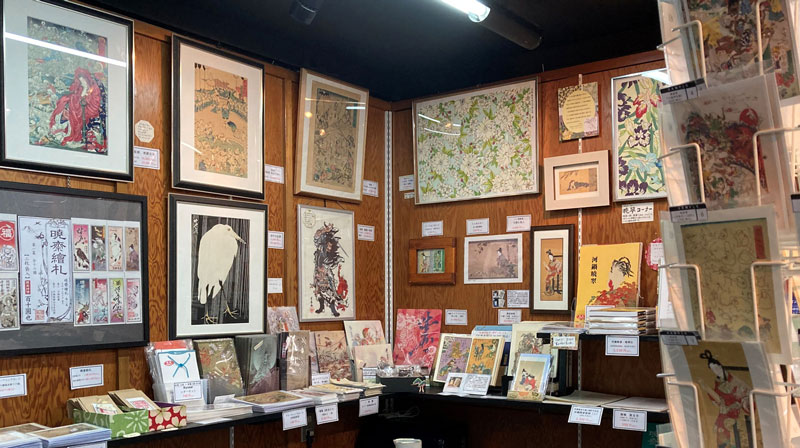
The museum shop also offers popular souvenirs featuring Kyōsai’s works
With its entire display changing every two months, the Kawanabe Kyōsai Memorial Museum offers something new to discover on every visit.
In addition to ukiyo-e woodblock prints, the museum also exhibits hanging scrolls and valuable preparatory sketches, allowing visitors to fully immerse themselves in Kyōsai’s world.
Whether you are already familiar with his name or discovering him for the first time, a visit is sure to leave you captivated by the sheer energy of his work.
Information
| Facility name | 河鍋暁斎記念美術館 KAWANABE KYOSAI MEMORIAL MUSEUM |
|---|---|
| Address | 4-36-4 Minamichō, Warabi City, Saitama Prefecture
|
| Access |
(Bus Stop) Kawanabe Kyōsai Memorial Museum Short walk from the Kawanabe Kyōsai Memorial Museum stop
Nishi-Kawaguchi Station 20-minute walk from Nishi-Kawaguchi West Exit
|
| Phone number | 048-441-9780 |
| Hours | 10:00-16:00(last admission is 16:00) |
| Closed | Tues. & Thurs. & the 26th to the end of the month each month New Year’s holidays and unscheduled holidays |
| Admission fee | General admission 600 JPY (tax included) Ages 65 and over: 500 JPY (tax included; ID required) High school & university students: 500 JPY (tax included; student ID required) Elementary & junior high school students: 300 JPY (tax included) Children under elementary school age: free Visitors with a disability certificate: 100 JPY off admission (disability certificate required) |
| Official website | http://kyosai-museum.jp/ |
| Pamphlets/th> | Available with Japanese and English language only only the museum’s overview brochure |
| Exhibit audio guides | None |
※All museum information in this article is accurate as of August 2025.
